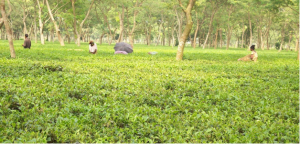About the division
Purnea Division/ Commissionary

Purnea Division/Commissionary is an Administrative Unit of Bihar state of India. Purnea Town is the administrative headquarter of this division. The division consists of four districts of Seemanchal Region- Purnea, Katihar, Araria and Kishanganj. Purnea being the oldest district as well as historically first declared district under British Rule way back in 1770. Other district has been carved out subsequently. Katihar in year 1976 followed by Araria and Kishanganj in year 1990.
The division is headed by Divisional Commissioner. A senior IAS Officer of secretary or above Rank. The present incumbent being Sri Rajesh Kumar, IAS Officer of 2001 Batch.
Geographically Purnia Division spans over approximately 10,163 square kilometers and is home to a projected population of about 1.15 crore as per 2025 incremental figures. This Area being close to Bengal and Nepal is culturally slightly different from other parts of Bihar. Cultural life and festivals signifies significant impact of Bengal. The weather is also less hot and more Rainy. This land is known for Major rivers Criss crossing the whole landscape of this area. The major rivers being the Kosi, Mahananda, Suwara Kali, and Koli besides Ganges in the south. Languages commonly spoken include Hindi, Maithili, Surjapuri, Bengali, Urdu and Santhali reflecting the area’s rich linguistic and Cultural diversity. This Region experiences a humid subtropical climate, characterized by hot summers and heavy monsoon rainfall.
The Purnea Commissionary manages and oversees key aspects of General and Revenue Administration mainly public order, Law and Order, Revenue and land reforms, Disaster management besides Inter-departmental co-ordination. Economically, the division is predominantly agrarian, cultivating crops like paddy, maize, banana, jute, and wheat. Trade hubs such as Purnia and Katihar are emerging, although the region still grapples with development challenges.
Culturally, the Purnia Division holds significant importance within the Mithila and Seemanchal regions. It is home to revered religious sites like the Puran Devi Temple in Purnia, Maa Kamakhya Devi Temple in Manjra panchayat, K.Nagar, Purnea and Kali Mandir in Katihar besides other places of religious and Cultural significance. Its strategic location near international and inter-state borders enhances its importance in border security and International Issues.
The division is celebrated for its cultural affluence with diverse religious and linguistic communities living peacefully and empathetically over years.



